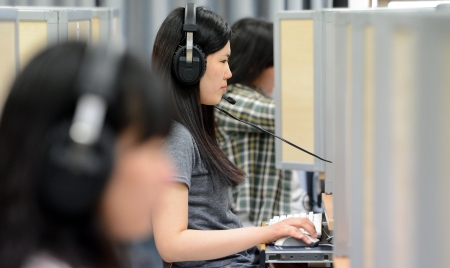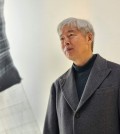- California Assembly OKs highest minimum wage in nation
- S. Korea unveils first graphic cigarette warnings
- US joins with South Korea, Japan in bid to deter North Korea
- LPGA golfer Chun In-gee finally back in action
- S. Korea won’t be top seed in final World Cup qualification round
- US men’s soccer misses 2nd straight Olympics
- US back on track in qualifying with 4-0 win over Guatemala
- High-intensity workout injuries spawn cottage industry
- CDC expands range of Zika mosquitoes into parts of Northeast
- Who knew? ‘The Walking Dead’ is helping families connect
English divide deepens in Seoul
By Sung Yeon-ju
High school seniors in affluent areas of Seoul have widened the gap with their counterparts in poor areas in English test scores on the standardized college entrance exam, a recent study shows.
On the basis of this, Professor Kim Kyung-min of Seoul National University, who led the study, concluded parents’ income is a crucial factor in their children’s English education.
The study showed 14 percent of students from Gangnam, which is regarded as one of the wealthiest districts in Seoul, accounted for 4 percent of the top scorers on the English test in the entrance exam conducted in 2008.
English together with mathematics are the most important disciplines in which students need to excel in order to enter good universities. Therefore, parents compete to get their children the best private tutoring possible, often at a big financial cost.
Only 0.64 percent of students from Geumcheon, one of the poor districts, were included in the highest scorers’ group.
From 1999 to 2008, the proportion of students placed in the top group rose 4.3 percent on average in Gangnam, Seocho, Yangcheon and Songpa, which comprise the upscale Gangnam area in southern Seoul.
In 1999, 1.4 percent of students from Geumcheon were among the top scorers’ group, but the proportion halved in 2008.
The percentage of top scorers also decreased in Gwanak, Gangbuk and Seongdong.
There was also a correlation between the academic achievements of students and home prices, the study said.
In southern Seoul, where home prices are relatively higher than other parts of the capital, there were more top scorers.
This is because wealthy families prefer to live in southern Seoul, where there are also more private tutoring institutes.
Unfortunately, the “English divide” between districts in Seoul is also evident among elementary students.
Lee Jung-yeon, a former researcher at the Seoul Education Research and Information Institute, insisted that the gap between Gangnam, Seocho, Songpa and other districts has been growing.
He tracked primary school students from 2010 to 2013 and measured the score gap between rich and poor groups.
The score gap of the 10-year-old student group in 2010 was 15 but it soared to 29 when they were 13. The gap of the 13-year-old student group in 2010 was 20.8 but it increased to 27 when they turned 15.
This means the gap in academic achievement between students from the three wealthy districts and others widens as they grow older.
The Seoul Metropolitan Government is seeking to address this problem.
It plans to spend 1.2 trillion won on programs aimed at reducing the gap. They include after-school lessons for students from less-affluent districts.

















tempat sampah plastik
December 15, 2017 at 11:52 PM
Kami adalah perusahaan terkemuka di bidang pembuatan dan penjualan tempat sampah dengan teknologi canggih inovatif. Sejak awal berdiri, rajatempatsampah.com telah memberikan kontribusi yang besar dalam pengembangan penanganan sampah dengan cara yang mudah, cepat dan higeinis. Motto kami adalah “FOR THE LIVING OF BETTER EARTH” perusahaan kami peduli pada masa depan bumi dan ingin mendorong orang untuk secara serius mengelola sampah dengan cara yang baik, sehat dan benar. Kami ada untuk kehidupan yang lebih baik bagi bumi kita ini. Melalui bantuan produk kami yang inovatif, kita wujudkan bumi yang sehat, bersahabat dan nyaman untuk kita tinggali.